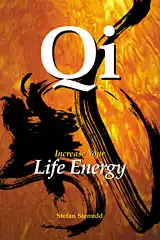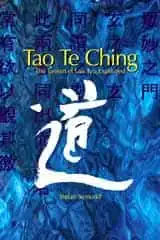|
Tao Te Ching
THE TAOISM OF LAO TZU
|
Tao Te Ching
|
The Book
The Taoism of Lao Tzu Explained. The great Taoist philosophy classic by Lao Tzu translated, and each of the 81 chapters extensively commented. Click the image to see the book at Amazon (paid link). |
The Sage Dares Not Act
The first half of this chapter adds arguments to what was explained in the previous one: the importance of solving problems before they grow big.
The connection to chapter 63 is so obvious that one must wonder why they are divided. The reason might be one of length. Chapter 63 is long enough as it is, without the first half of this chapter. Together they would form a chapter longer by far than any other in the Tao Te Ching.
We are reminded of the fact that the division of the text into 81 chapters is a later revision. It was done several centuries after the book was written. The only division assumed to be original was that into two parts: chapters 1-37, called Tao, and 38-81, called Te.
The last line that deals with the theme of the previous chapter is the one about a climb of eight hundred feet. Most versions of it read differently: "A journey of a thousand li starts where you stand." But both the manuscripts found in Mawangdui, dating to around 200 BC, have lines similar to the one used here.
The manuscript from Guodian, a hundred years older, is inconclusive on this point, because of damages to it.
I can understand why the line was changed somewhere along the way. The line above it already introduces height, so length would make more sense to deal with next. Still, I have decided to go with what is so far established as the oldest version.
The two versions make no difference in meaning. Projects of whatever size are minute at the moment they begin.
Attention to the End
The second half of this chapter deals with the danger of action. What is done is hard to undo, so it has to be considered very seriously beforehand.Lao Tzu actually claims that most actions fail, if not all of them. Only if there is just as much care about the end as the beginning, there is a chance of success. That really means the same care all through.
That might seem self-evident, but it's easily neglected. We tend to start our projects with resolute energy and complete attention, but soon our concentration wavers and our efforts decrease. It's as if we tire quickly. Or we might have the illusion that things we start reach their completion automatically, as if nothing can go wrong along the way. It may be a combination of both.
Our behavior is bound by patterns inside our minds. The habit we have of starting things and then just letting them go, stems from the patterns of how we think about the world.
It's the rhythm of existence: We give life to our children, take care of them while they need it to survive, and then let them go – beyond the future that we can ourselves expect to reach. Probably, we tend to see all our projects as children of ours, and therefore lack the urge to follow them through to the end. We might not even want them to ever end.
It's strange how human deeds are slowed down right before completion. The last steps of a long walk are not the quickest. At the end of a meal we chew less eagerly than when the plate was full. The end of a song is rarely as abrupt as its beginning. We hurry into things but hesitate when the end comes near.
In many cases there are obvious reasons for this. Still, it's a pattern we follow, even when there's no reason for it. We like beginnings but fear endings.
Surely, this has to do with the fact that we will all die, and we know it. A start is like birth, an end is like death. We cheer the former and dread the latter. Lao Tzu has told us that we should not hurry from the one to the other, and we rarely do – willingly. So, we have great trouble finishing things of any kind.
Because of our unwillingness to deal with endings, we are prone to fail with what we begin.
Shortcomings of the Sage
The sage has such respect for this shortcoming of ours, he refrains from action. He desires no desire, seeks no treasure, ignores knowledge, and settles for what others reject. He has no ambition. He dares not act, although he is wise enough to lead the world around him on its natural course.He must suspect that he, too, has the shortcomings he finds in others, at least when it comes to action. So, in his wisdom he refrains from acting.
In many versions of the Tao Te Ching, the last lines of this chapter read: "He lets all things follow their own nature, and dares not act." This implies that the sage is afraid of disturbing the good order, and therefore refrains from action.
Again, the Mawangdui manuscripts present another reading: "He could help all things follow their own nature, but dares not act." It's supported by the Guodian manuscript. I have allowed myself a small compromise, with the word `wants' instead of `could help,' which is sort of halfway to `lets.'
Still, the difference is considerable. It means that although the sage sees the need for improvement, he holds still. If interfered with, even an imperfect world risks getting worse. Also when things don't go the right way, there's an additional risk in trying to correct them.
Usually, our excuse for springing into action is that there's need for improvement. There certainly is, in many cases. Still, that's no guarantee we will not make things worse. The risk is actually increased. We easily find the right course of action in a well ordered world, but how to sort out a mess?
To find the right solution, we must know where it leads and how it will end. Our discomfort with endings makes us badly equipped for that.
NEXT
Tao Te Ching Explained
Preface
Introduction
Literature
translated and explained by Stefan Stenudd.
1 |
2 |
3 |
4 |
5 |
6 |
7 |
8 |
9 |
10 |
11 |
12 |
13 |
14 |
15 |
16 |
17 |
18 |
19 |
20 |
21 |
22 |
23 |
24 |
25 |
26 |
27 |
28 |
29 |
30 |
31 |
32 |
33 |
34 |
35 |
36 |
37 |
38 |
39 |
40 |
41 |
42 |
43 |
44 |
45 |
46 |
47 |
48 |
49 |
50 |
51 |
52 |
53 |
54 |
55 |
56 |
57 |
58 |
59 |
60 |
61 |
62 |
63 |
64 |
65 |
66 |
67 |
68 |
69 |
70 |
71 |
72 |
73 |
74 |
75 |
76 |
77 |
78 |
79 |
80 |
81 |
Tao Te Ching Explained
James Legge's Tao Te Ching
Aleister Crowley's Tao Te Ching
The 1st Chapter of Tao Te Ching in 76 Versions
Lao Tzu — Legendary Author of Tao Te Ching
My Taoism BooksClick the image to see the book at Amazon (paid link).
The Taoism of Lao Tzu Explained. The great Taoist philosophy classic by Lao Tzu translated, and each of the 81 chapters extensively commented. |
About Cookies
My Other Websites:
I Ching Online
The 64 hexagrams of the Chinese classic I Ching and what they mean in divination. Try it online for free.
Qi Energy Exercises
The ancient Chinese life energy qi (chi) explained, with simple instructions on how to exercise it.
Life Energy
The many ancient and modern life force beliefs all over the world explained and compared.
Taoismen på svenska
Other Books by Stefan Stenudd
Click the image to see the book at Amazon (paid link).
 Cosmos of the Ancients
Cosmos of the Ancients
The Greek philosophers and what they thought about cosmology, myth, and the gods.
 Qi — Increase Your Life Energy
Qi — Increase Your Life Energy
The life energy qi (also chi or ki) explained, with exercises on how to awaken, increase and use it.
 Aikido Principles
Aikido Principles
Basic concepts of the peaceful martial art. Aikido principles, philosophy, and fundamental ideas.
 Life Energy Encyclopedia
Life Energy Encyclopedia
Qi, prana, spirit, ruach, pneuma, and many other life forces around the world explained and compared.
 Archetypes of Mythology
Archetypes of Mythology
Jungian theories on myth and religion examined, from Carl G. Jung to Jordan B. Peterson.
 Stefan Stenudd
Stefan Stenudd
About me
I'm a Swedish author and aikido instructor. In addition to fiction, I've written books about Taoism and other East Asian traditions. I'm also an historian of ideas, researching ancient thought and mythology. Click the image to get to my personal website.Contact

 Tao Te Ching
Tao Te Ching Tao Quotes
Tao Quotes Fake Lao Tzu Quotes
Fake Lao Tzu Quotes